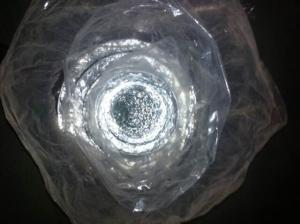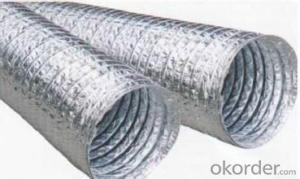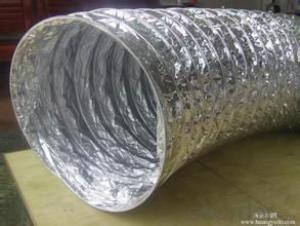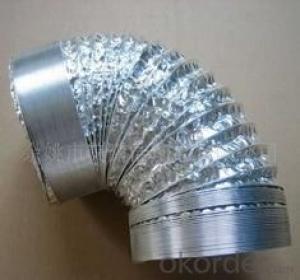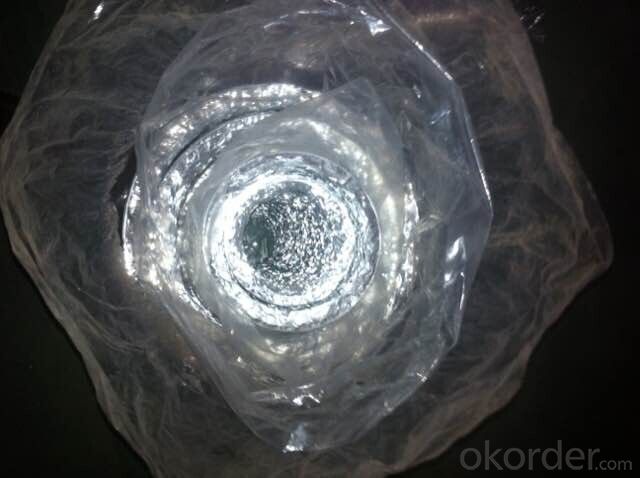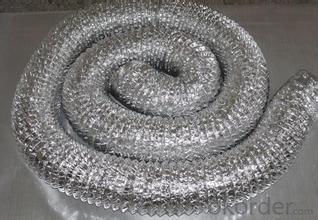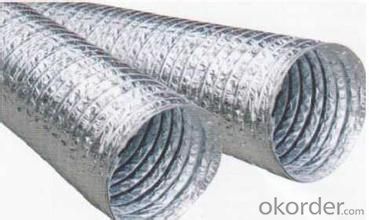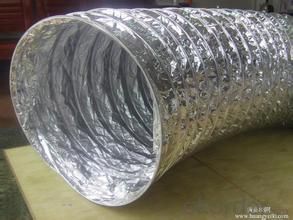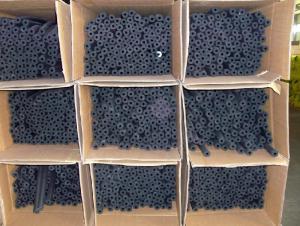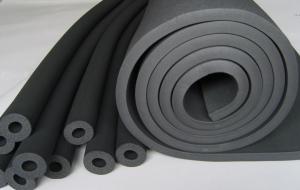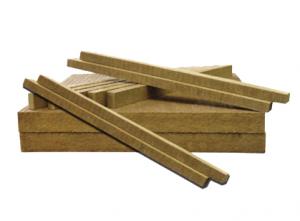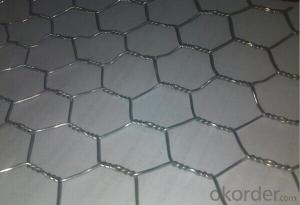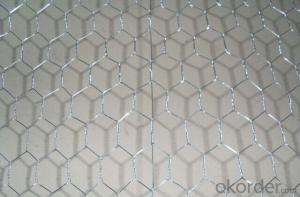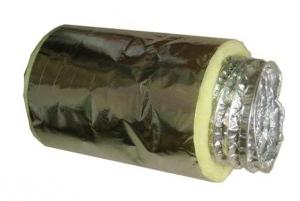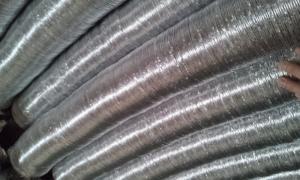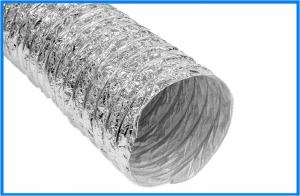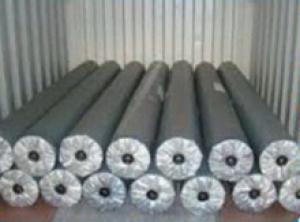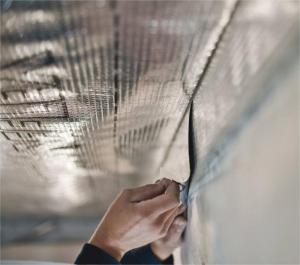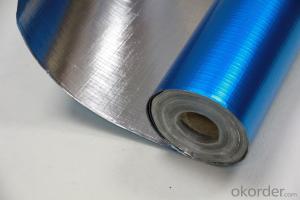Aluminum Foil Facing Insulated and Uninsulated Flexible Ducts in Good Quality
- Loading Port:
- Shanghai
- Payment Terms:
- TT or LC
- Min Order Qty:
- 500 pc
- Supply Capability:
- 700000 pc/month
OKorder Service Pledge
OKorder Financial Service
You Might Also Like
Description of Aluminium Flexible Duct
Flexible Duct is widely used in Heating, Ventilation and Air Conditioning (HVAC) systems for air ventilation applications.
Features and Characters of Aluminium Flexible Duct:
-Applied in Heating, Ventilation and Air Conditioning
-Non-insulated and insulated Flexible Duct offered
-Up to 150℃ and 250℃ high temperature
-Fire Retardant
Specification of Aluminium Flexible Duct:
Non-insulated Flexible Duct
Insulated Flexible Duct
Combined Flexible Duct
Pictures of Aluminium Flexible Duct:
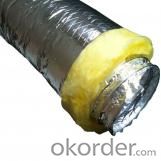
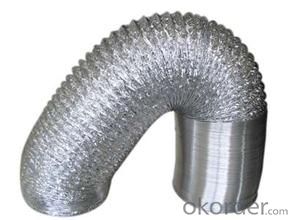
FAQ of Aluminium Flexible Duct:
1. What temperature maximum? Our products: 150℃ and 250℃
2. What MOQ? Our MOQ: 500 pcs
3. What payment terms? We accept T/T and L/C
4. Lead time: 10 days
- Q: This question asks for the most suitable materials to be used in conjunction with aluminum foil facing.
- <p>The best materials to use with aluminum foil facing are those that are compatible with its properties. For insulation, materials like fiberglass or polyethylene foam are ideal due to their thermal resistance. For construction, materials such as plywood or drywall can be used as a backing, as they provide a sturdy base. When it comes to sealing, materials like butyl rubber or silicone are effective because they adhere well to aluminum foil and create a watertight seal. It's crucial to select materials that won't react chemically with aluminum and can withstand the environmental conditions in which the foil facing will be used.</p>
- Q: How should aluminum foil be stored when not in use to maintain its facing orientation?
- <p>The best way to store aluminum foil is to keep it in its original box or a resealable container with the shiny side facing outward. This prevents the foil from sticking together and makes it easier to use. If the box is not available, you can also use a rubber band to wrap the foil around a cardboard tube, ensuring the shiny side is facing out, or place it in a container with a paper towel on the bottom to prevent sticking.</p>
- Q: Is it possible to use aluminum foil sheets as a substitute for traditional spring roll wrappers?
- <p>No, you cannot use aluminum foil sheets to make a spring roll. Spring rolls require a thin, flexible, and edible wrapper, typically made from rice flour or wheat flour. Aluminum foil is a non-edible, rigid material that would not only be inedible but also would not hold the filling properly. Instead, use proper spring roll wrappers or consider alternatives like lettuce leaves for a low-carb option.</p>
- Q: Is it possible to recycle aluminum foil with a facing layer in my country?
- <p>Yes, aluminum foil with a facing layer can often be recycled, but the process may vary by country. In many countries, aluminum foil is recyclable, including the type with a plastic or paper facing. However, it's important to check with your local recycling program, as some facilities may not accept it due to the difficulty in separating the layers. If your local program doesn't accept it, you might need to find a specialized recycling center that can handle this type of material.</p>
- Q: This question asks for methods to prevent aluminum from aluminum foil leaching into food.
- <p>To avoid aluminum from aluminum foil leaching into your food, use the foil sparingly and avoid wrapping food directly in it. Opt for heavy-duty aluminum foil, which is less likely to tear and expose food to aluminum. When cooking acidic or salty foods, consider using parchment paper or silicone baking mats as alternatives. Additionally, avoid using aluminum foil at high temperatures, as this can increase the risk of aluminum transfer. Finally, store food in glass or stainless steel containers instead of aluminum foil to minimize exposure.</p>
- Q: This question asks for methods to clean aluminum foil after it has been used for cooking and has old food stuck to it.
- <p>To remove old food from aluminum foil facing after cooking, start by letting the foil cool down to avoid burns. Then, use a plastic scraper or the edge of a credit card to gently scrape off the food particles. For stubborn residue, you can soak the foil in warm, soapy water for a few minutes before scrubbing with a soft sponge or cloth. Avoid using metal scrubbers as they can scratch the foil. After cleaning, rinse thoroughly and dry before storing or reusing.</p>
- Q: What are the potential health hazards linked to the use of aluminum foil facing?
- <p>The use of aluminum foil facing in construction or insulation can potentially pose health risks. Inhalation of aluminum dust can lead to respiratory issues, and long-term exposure may contribute to neurological problems. There's also a concern about the leaching of aluminum into food when using aluminum foil for cooking or food wrapping, which some studies suggest could be linked to Alzheimer's disease, although this link is not definitively proven. It's important to handle aluminum foil facing with care, ensuring proper ventilation and protective gear during installation to minimize health risks.</p>
- Q: Is it possible to use a single piece of aluminum foil for cooking or baking multiple times?
- <p>While aluminum foil is a versatile kitchen tool, it is not recommended to reuse a single piece of aluminum foil for cooking or baking multiple times. Aluminum foil can tear or become thin with use, which may compromise its effectiveness and potentially allow food to stick or contaminate the foil. Additionally, repeated use can lead to the accumulation of food particles and bacteria, posing a risk to food safety. It's best to use a fresh piece of aluminum foil for each cooking or baking session to ensure hygiene and椋熷搧瀹夊叏.</p>
- Q: The user is asking if aluminum foil can be used to make a pizza crust more flaky and tender.
- <p>Using aluminum foil facing on a pizza crust won't inherently make it more flaky or tender. The flakiness and tenderness of a pizza crust are determined by the ingredients used and the method of preparation. For a flakier crust, consider using a higher fat content like butter or shortening, and for tenderness, ensure proper hydration and kneading of the dough. Aluminum foil is typically used for its heat distribution properties and to prevent direct contact with the oven rack, which can help in browning the bottom of the crust. However, it doesn't affect the flakiness or tenderness directly.</p>
- Q: Does using aluminum foil facing have any positive effects on health when baking bread?
- <p>Using aluminum foil facing when baking bread does not directly provide health benefits. However, it can help in achieving a more even bake and a better crust, which may enhance the overall quality of the bread. Aluminum foil facing can also prevent bread from burning by reflecting heat away from the bread's surface. While this doesn't impact health, it can improve the bread's taste and texture, which might indirectly contribute to a more enjoyable eating experience and potentially encourage healthier food choices.</p>
Send your message to us
Aluminum Foil Facing Insulated and Uninsulated Flexible Ducts in Good Quality
- Loading Port:
- Shanghai
- Payment Terms:
- TT or LC
- Min Order Qty:
- 500 pc
- Supply Capability:
- 700000 pc/month
OKorder Service Pledge
OKorder Financial Service
Similar products
Hot products
Hot Searches
Related keywords
